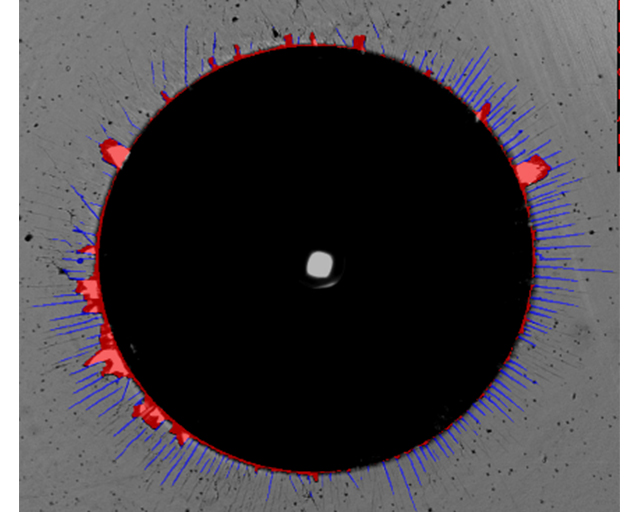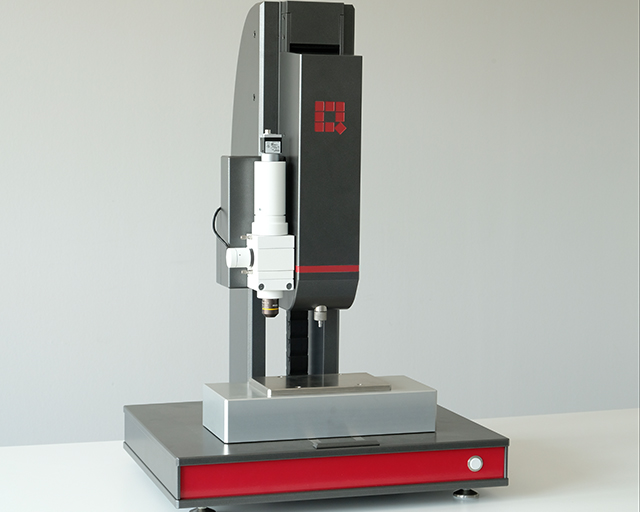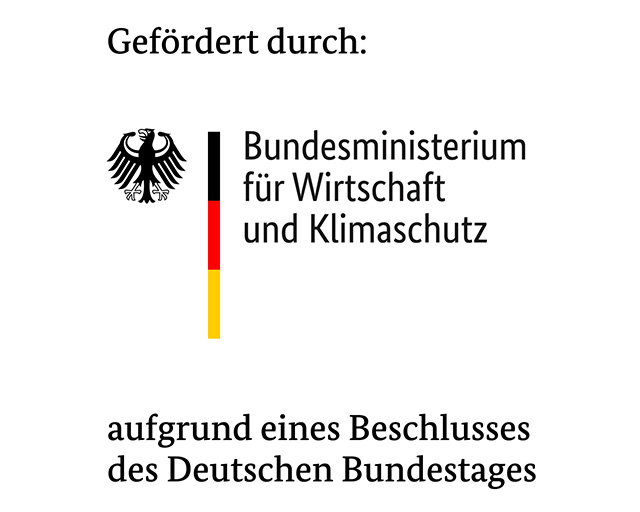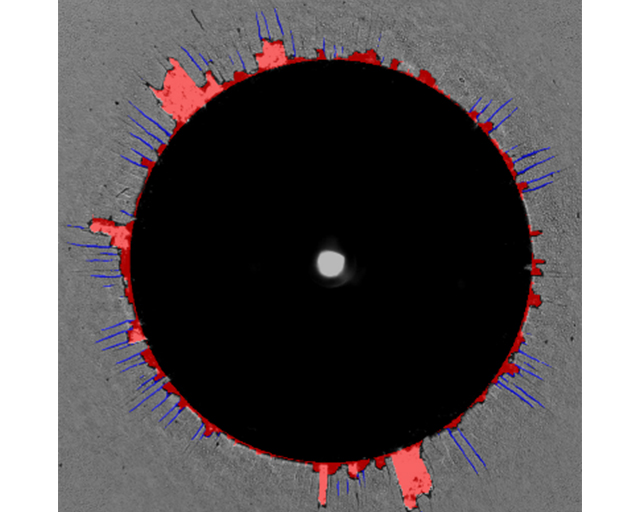The coating adhesion of hard coatings is a major quality criterion for the functional reliability of a coated component. In cooperation with industrial partners, a new evaluation procedure based on machine learning has been developed at the Fraunhofer institutes IST and ITWM which enables the automation of the evaluation of the coating adhesion by the Rockwell indentation test. Not only the determination of the adhesion classes but also the Rockwell indentation and the microscope image acquisition are performed in an automated process. In just a few minutes and without manual intervention, a component can be reliably tested for coating adhesion at several test points.
Automation of the Rockwell adhesion test for reliable quality control

Rockwell indentation test for evaluation of coating adhesion
The Rockwell indentation test is a testing procedure for the evaluation of coating adhesion and has been established in industry and research for many years. As with a Rockwell hardness test, an indent is generated on the coated component by means of a diamond indenter. Any damage to the coating at the edge of the indent is evaluated qualitatively and classified through visual impression into adhesion classes (HF, German: Haftklassen) in accordance with the DIN 4856 and ISO 26443 standards.
Motivation
Despite the specified standards for the procedure, the result of the adhesion test incorporates a subjective grade depending on the experience of the test person. A random sample of more than 500 images, which were evaluated by four experts, revealed frequent differences: Good (HF 1) and poor coating adhesion (HF 5 and 6) are generally evaluated uniformly by different testers. In the case of medium coating adhesion (HF 2 to 4), however, evaluation differences frequently occur.

The Figures above show typical Rockwell indents for the evaluation of coating adhesion, for which differences can occur during visual evaluation. Depending on the test person, an adhesion class of 2 or 3 was assigned in the Figure on the left, and HF 3 or HF 4 in the Figure on the right. For industrial applications, this indicates the necessity for an objective evaluation and finer subdivision of the adhesion classes with one decimal, in order to enable repeatable quality assurance and controllability of the coating processes.

A new, automated evaluation procedure
In cooperation with the companies BAQ and Schaeffler, a new test bench for the evaluation of coating adhesion has been developed which achieves the aforementioned objectives (see adjacent Figure). The generation of the Rockwell indent as well as the microscope image are thereby performed fully automatically. The automatic analysis of the damage is carried out by means of electronic image processing on the basis of machine learning. This was developed at the Fraunhofer Institute for Industrial Mathematics ITWM and is based on a characteristics analysis, i.e. the schematic sketches of each adhesion class present in the standards form the basis for the evaluation. The adhesion classes HF 2, HF 3 and HF 4 are specified with one decimal. The automated evaluation of the sample images results in a reproducible and objective coating adhesion of HF 2.9 (above Figure on the left) or HF 3.4 (above Figure on the right). The automated Rockwell coating adhesion test was validated at the Fraunhofer IST on various amorphous carbon coatings (diamond-like carbon, DLC) using real industrial components, in order to optimize the optical recording technique and the characteristic criteria.

The project
The project “Automatisierte Rockwell-Schichthaftungsprüfung – AUROS” (automated Rockwell coating adhesion test) is being conducted within the framework of the “WIPANO“ funding program. The project is Supported by Federal Ministry for Economic Affairs and Energy on the basis of a decision of the German Bundestag.
This article is part of the annual report 2020.
